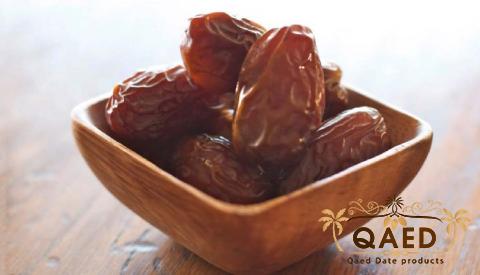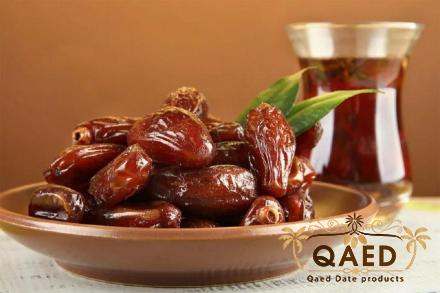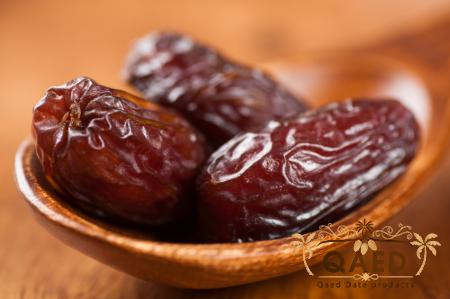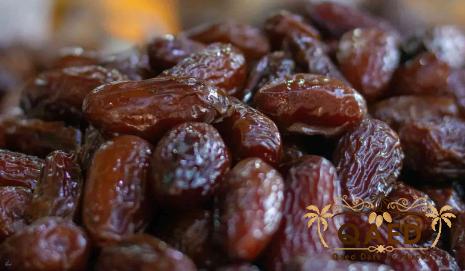Medjool dates and red dates are two popular varieties of dates that offer a range of flavors, textures, and health benefits. While both are sweet and delicious fruits, they have distinct characteristics that set them apart. In this article, we will explore the differences between medjool dates and red dates, including their origins, flavors, nutritional profiles, and culinary uses. Medjool dates, often referred to as the “king of dates,” are native to Morocco and have been cultivated for centuries. They are known for their large size, soft texture, and rich, caramel-like flavor. Medjool dates have a glossy, amber-brown skin and a sweet, honey-like taste that makes them a popular choice for snacking or as a natural sweetener in recipes.

.
 In contrast, red dates, also known as jujubes or Chinese dates, are a type of fruit that originated in China and have been used in traditional Chinese medicine for thousands of years. Red dates have a wrinkled, reddish-brown skin and a mild, sweet flavor with a hint of tartness. They are often dried to preserve them and are commonly used in soups, stews, and desserts in Chinese cuisine. One of the key differences between medjool dates and red dates lies in their nutritional profiles. Medjool dates are rich in fiber, vitamins, and minerals, including potassium, magnesium, and vitamin B6. They are also a good source of antioxidants, which can help protect against oxidative stress and inflammation in the body. Red dates, on the other hand, are particularly high in vitamin C and have been used in traditional Chinese medicine to boost the immune system and promote overall health and well-being. When it comes to culinary uses, both medjool dates and red dates are versatile ingredients that can be used in a variety of dishes.
In contrast, red dates, also known as jujubes or Chinese dates, are a type of fruit that originated in China and have been used in traditional Chinese medicine for thousands of years. Red dates have a wrinkled, reddish-brown skin and a mild, sweet flavor with a hint of tartness. They are often dried to preserve them and are commonly used in soups, stews, and desserts in Chinese cuisine. One of the key differences between medjool dates and red dates lies in their nutritional profiles. Medjool dates are rich in fiber, vitamins, and minerals, including potassium, magnesium, and vitamin B6. They are also a good source of antioxidants, which can help protect against oxidative stress and inflammation in the body. Red dates, on the other hand, are particularly high in vitamin C and have been used in traditional Chinese medicine to boost the immune system and promote overall health and well-being. When it comes to culinary uses, both medjool dates and red dates are versatile ingredients that can be used in a variety of dishes.
..
 Medjool dates are often enjoyed on their own as a sweet snack or used to sweeten smoothies, baked goods, and dressings. They can also be stuffed with nuts or cheese for a simple and elegant appetizer. Red dates are commonly used in Chinese cooking to add natural sweetness to savory dishes such as soups, braised meats, and stir-fries. They can also be simmered in water to make a sweet and nourishing tea or blended into a paste to make desserts like red date cakes or candies. In traditional Chinese medicine, red dates are often combined with other herbs and ingredients to create tonics and elixirs that are believed to support health and vitality. In conclusion, both medjool dates and red dates are nutritious and delicious fruits that offer a range of culinary possibilities. Whether you prefer the rich sweetness of medjool dates or the subtle tanginess of red dates, incorporating these fruits into your diet can provide a tasty and healthy addition to your meals. Next time you’re looking for a natural sweetener or a flavorful ingredient to enhance your dishes, consider reaching for medjool dates or red dates to enjoy their unique flavors and benefits. Aside from their culinary uses, medjool dates and red dates also have several health benefits that make them a valuable addition to your diet. Medjool dates, being high in fiber, can aid in digestion and promote gut health. The fiber content helps regulate bowel movements and prevent constipation. Additionally, the natural sugars in medjool dates provide a quick source of energy, making them a great snack option for athletes or those in need of a natural energy boost. The potassium content in medjool dates also helps regulate blood pressure and promote heart health. On the other hand, red dates are known for their immune-boosting properties due to their high vitamin C content.
Medjool dates are often enjoyed on their own as a sweet snack or used to sweeten smoothies, baked goods, and dressings. They can also be stuffed with nuts or cheese for a simple and elegant appetizer. Red dates are commonly used in Chinese cooking to add natural sweetness to savory dishes such as soups, braised meats, and stir-fries. They can also be simmered in water to make a sweet and nourishing tea or blended into a paste to make desserts like red date cakes or candies. In traditional Chinese medicine, red dates are often combined with other herbs and ingredients to create tonics and elixirs that are believed to support health and vitality. In conclusion, both medjool dates and red dates are nutritious and delicious fruits that offer a range of culinary possibilities. Whether you prefer the rich sweetness of medjool dates or the subtle tanginess of red dates, incorporating these fruits into your diet can provide a tasty and healthy addition to your meals. Next time you’re looking for a natural sweetener or a flavorful ingredient to enhance your dishes, consider reaching for medjool dates or red dates to enjoy their unique flavors and benefits. Aside from their culinary uses, medjool dates and red dates also have several health benefits that make them a valuable addition to your diet. Medjool dates, being high in fiber, can aid in digestion and promote gut health. The fiber content helps regulate bowel movements and prevent constipation. Additionally, the natural sugars in medjool dates provide a quick source of energy, making them a great snack option for athletes or those in need of a natural energy boost. The potassium content in medjool dates also helps regulate blood pressure and promote heart health. On the other hand, red dates are known for their immune-boosting properties due to their high vitamin C content.
…
 Vitamin C is a powerful antioxidant that helps protect cells from damage and supports the immune system in fighting off infections and illnesses. Red dates are often used in traditional Chinese medicine to strengthen the spleen and improve blood circulation, leading to increased energy levels and overall vitality. Both medjool dates and red dates are low in fat and cholesterol, making them heart-healthy snack options. They are also naturally sweet, which can help satisfy sugar cravings in a healthier way compared to processed sweets. Incorporating these fruits into your diet can help reduce the risk of chronic diseases such as diabetes, heart disease, and obesity. In terms of availability, medjool dates are more widely known and easily found in most supermarkets and specialty stores. They are typically sold fresh or dried, making them a convenient option for snacking or cooking. Red dates, while less common in Western countries, can often be found in Asian grocery stores or online retailers. They are usually sold dried and packaged in bulk, making them a cost-effective choice for adding sweetness and flavor to a variety of dishes. In conclusion, whether you prefer the luxurious sweetness of medjool dates or the subtle tanginess of red dates, both fruits offer a range of flavors, textures, and health benefits that make them worthwhile additions to your diet. From their culinary uses to their nutritional profiles and potential health benefits, medjool dates and red dates are versatile ingredients that can enhance both sweet and savory dishes. Next time you’re looking for a natural and flavorful way to sweeten your meals or boost your health, consider reaching for medjool dates or red dates to enjoy their unique qualities and delicious taste.
Vitamin C is a powerful antioxidant that helps protect cells from damage and supports the immune system in fighting off infections and illnesses. Red dates are often used in traditional Chinese medicine to strengthen the spleen and improve blood circulation, leading to increased energy levels and overall vitality. Both medjool dates and red dates are low in fat and cholesterol, making them heart-healthy snack options. They are also naturally sweet, which can help satisfy sugar cravings in a healthier way compared to processed sweets. Incorporating these fruits into your diet can help reduce the risk of chronic diseases such as diabetes, heart disease, and obesity. In terms of availability, medjool dates are more widely known and easily found in most supermarkets and specialty stores. They are typically sold fresh or dried, making them a convenient option for snacking or cooking. Red dates, while less common in Western countries, can often be found in Asian grocery stores or online retailers. They are usually sold dried and packaged in bulk, making them a cost-effective choice for adding sweetness and flavor to a variety of dishes. In conclusion, whether you prefer the luxurious sweetness of medjool dates or the subtle tanginess of red dates, both fruits offer a range of flavors, textures, and health benefits that make them worthwhile additions to your diet. From their culinary uses to their nutritional profiles and potential health benefits, medjool dates and red dates are versatile ingredients that can enhance both sweet and savory dishes. Next time you’re looking for a natural and flavorful way to sweeten your meals or boost your health, consider reaching for medjool dates or red dates to enjoy their unique qualities and delicious taste.











Your comment submitted.